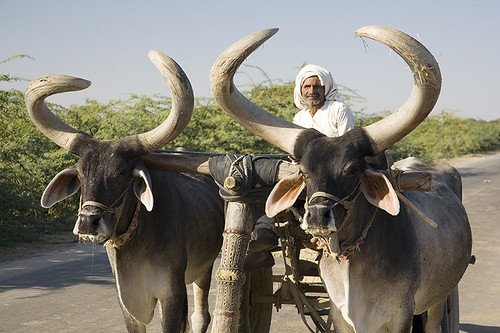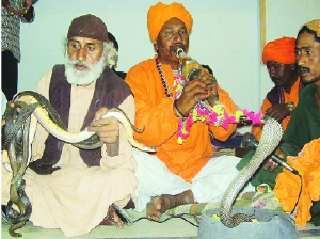
Muhammad Alam Lohar was a prominent Punjabi folk music singer of Pakistan.He died in 1979 in an accident. He is also credited with popularizing the term and song Jugni. Alam Lohar was born in the small village of Aach Goach in Gujrat District, in Punjab, Pakistan into a family of blacksmiths. He was gifted with a melodious voice and began singing as a child. Alam Lohar developed a new style of singing the Punjabi Vaar, an epic or folk tale. He is famous for his rendition of Waris Shah’s Heer, which he has memorized in 36 styles and forms. He recorded his first album at the age of 13 and has outsold all other singers in Pakistan (Verified in records kept with HMV Pakistan 1979)
Alam Lohar - Jugni (classic original)
URL: http://youtu.be/0VuJ5_W-3eY
ALAM LOHAR - MIRZA MASSI KOL JANDA (ALAM LOHAR)
URL: http://youtu.be/Crnn37jWTak

In his childhood he used to read sufiana kalaams, Punjabi stories and participate as a young child in local elderly gatherings expressing a vocal only art form in reading passages of great poets. From many of the gatherings out of the rural background rose a great singer that could influence his audience with elements of joy peace, happiness and sadness. Further on: he started going to festivals and gatherings on a regular basis and within these performances he rose to become one of the most listened to singers in South Asia. In the 1970s it was the Queen's Jubilee event in the UK and there was a singing competition between all Commonwealth Countries and after all performances: Alam Lohar won the award as the best performance and was handed a gold medal for his unique and God given voice. Throughout the period of 1930's and until his passing away in 1979 he has dominated Folk singing in Pakistan and been a major singer in Punjabi and Sufi singing throughout the entire World. In many rural villages the local traditional people have called him 'Sher-e-Punjab' or 'Heerah' meaning diamond.
ALAM LOHAR - MEIN NEEL KARAIYAN (ALAM LOHAR)
URL: http://youtu.be/eJ1posqv6jg

Alongside his God given voice and singing in difficult high and low pitches he had a unique style of singing with his Chimta. Now the Chimta has been around for centuries as it was a tool used in gathering livestock in rural settings or used as a aid in other activities, but Alam Lohar has the unique credit that he single handedly popularised this instrument globally and modified its use and changed its outlook.
ALAM LOHAR - BURA KITTE SAHIBAN (ALAM LOHAR)
URL: http://youtu.be/n2vU84xlgJI
ALAM LOHAR - TOO JEEVAIN BARIWALEYA (ALAM LOHAR)
URL: http://youtu.be/zJwIipzvU7M

Other than being a famous singer, Alam lohar was also a great poet writing his own songs and kalaams and also had another quality that he used old books of Sufi saints and stories and brought them in a song format: which gave his songs overwhelming great lyrical content which could make people cry and express joy at the same time. The word "Jugni" was his creation and he created this term from reading many Sufi writings and represented this word as a spiritual feeling of ones experience of the world. Furthermore he was the pioneer of introducing the writings of Saif Ul Mulook and Mirza Shabaan in a song format.
ALAM LOHAR - BOLE AKBAR BADSHAH (ALAM LOHAR)
URL: http://youtu.be/mOSRJprgWcc

Alam Lohar had another quality that he had overwhelming singing stamina - he was renowned to sing all night and sometimes without the music technology we have with PA systems now-nevertheless his strong voice could be heard in large gatherings. In rural punjab he used to sing from village to village and without any modern music technology: his voice reflected with the background of the natural echo caused by the stillness of the night. In essence, later on Alam Lohar organised a full-fledged theatre with a complete orchestra. His troupe toured all over Punjab for religious and seasonal festivals and was one of the first Pakistani as well as South Asian singers to sing internationally in almost all countries that had people from the South Asian region.
ALAM LOHAR - LIVE - AYE ISHQ DA ROG AWALLA AYE (Baba Bullay Shah)
URL: http://youtu.be/u7P6myajv8Q
Alam Lohar died in an accident near Sham ki Bhaitiyan on July 3, 1979. He was laid to rest in Lala Musa, Punjab, Pakistan. He was given the Pride of Performance award in 1979 by General Zia Ul Haq in Islamabad and has received numerous awards within his lifetime. He is a pioneer in cultural and Folk styled singing and has in his own right become a folk story. He set a bench mark and many Punjabi and other folk singers have greatly been influenced. Therefore he has left a great legacy of a unique style of singing which is still followed in Pakistan by Punjabi as well as other folk singers. One of the greatest singers of all time: he is seen and remembered through his son Arif Lohar who has continued in the same tradition. May he rest in Peace - & May God grant him Peace - Alam Lohar http://en.wikipedia.org/wiki/Alam_Lohar








